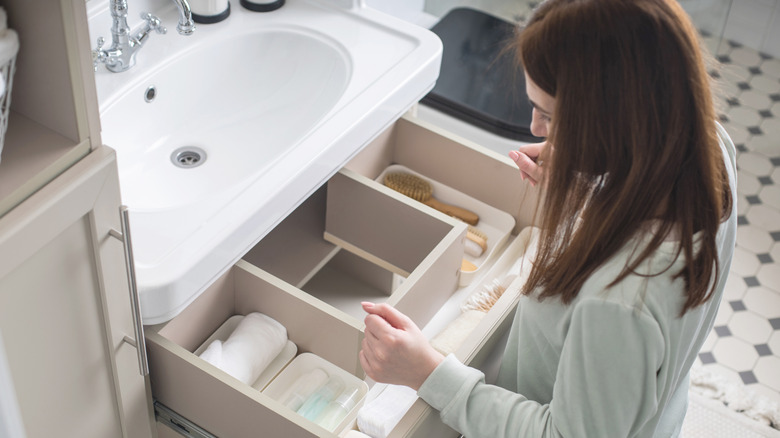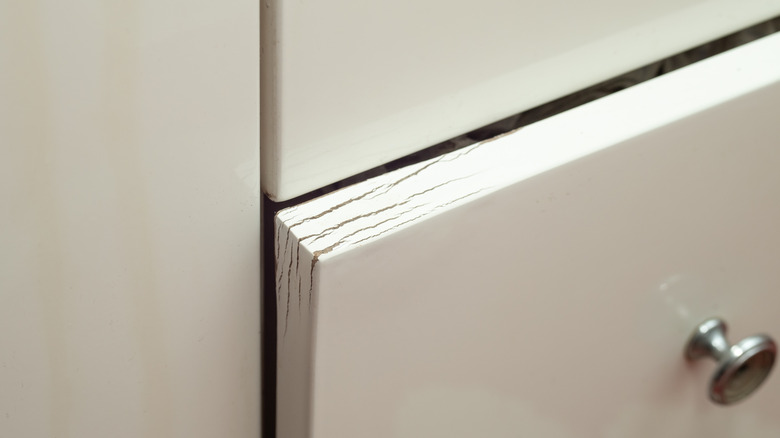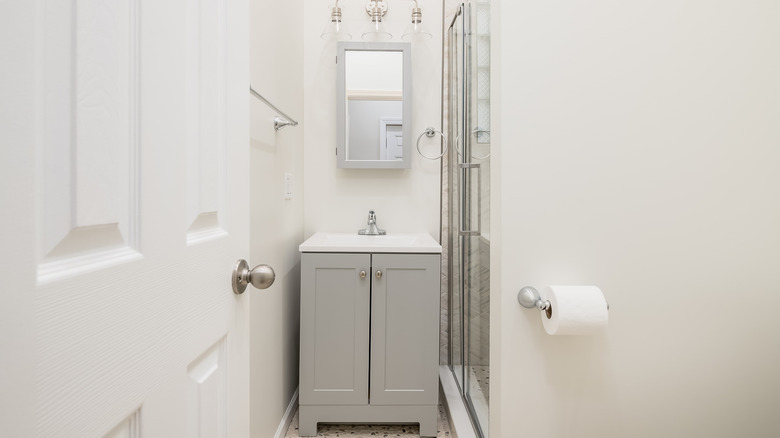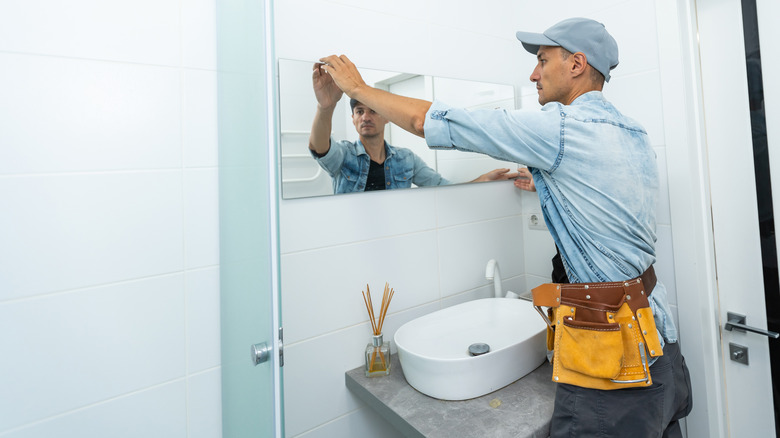Mistakes Everyone Makes When Upgrading Their Bathroom Vanity
We may receive a commission on purchases made from links.
You've browsed through bathroom vanity ideas to elevate your space; found one that you liked; and marked your calendar. Excitingly, it's finally time to update your vanity sink. But wait — before you start tearing out your old one, it's important to consider all the nitty-gritty elements involved in the upgrade. For instance, some homeowners forget that vanity plumbing isn't a one-size-fits-all deal. Others misjudge how much storage they really need until clutter takes over their countertops. To avoid all that and more, we tapped Christina Couvillion, Design Visionary and CEO at Davinci Interiors, for professional guidance.
In a nutshell, the expert says to "do your homework and plan the bathroom layout on paper or with an online tool." The easiest route would be to pick something that matches the size of your existing piece. "However, if you have the space and are feeling bold, we encourage choosing a larger vanity to enhance both the design and functionality of your bathroom," Couvillion pointed out during her exclusive interview with House Digest. With that out of the way, here are the top mistakes to steer clear of during reno day.
Underestimating functionality
The funnest aspect of updating an outdated sink and vanity combo might be choosing a design. There are vessel sinks, undermount styles, integrated options, and floating alternatives — it's all too easy to fall for the one that catches your eye the most. However, don't let that distract you from its practicality, though.
"Ensure the vanity is the right height for comfort (standard heights range from 32 to 36 inches)," Christina Couvillion exclusively told House Digest. "Assess your storage needs based on the number of people using the bathroom and the items you need to store." According to Couvillion, drawer dividers, pull-out shelves, and deep drawers are your friends. The same goes for integrated outlets and USB ports (which are key to keeping hair tools and electric razors out of sight!). Add built-in lighting to your must-haves if you're tired of your dingy overhead bathroom light. "These small details can greatly enhance usability," Couvillion noted.
Not knowing which materials stand the test of time
Another rookie mistake? "Opting for materials that can't withstand moisture, leading to warping, mold, or deterioration over time," Christina Couvillion shared during her exclusive chat with House Digest. "Since bathrooms are high-moisture areas, choose materials like solid wood, MDF with a durable finish, or moisture-resistant laminates that can withstand daily use." Just make sure the cabinets are coated with a protective finish if they're solid wood. This will give the unit extra durability.
Now for the countertop, Couvillion specifically suggests "quartz, granite, or solid surface materials." These aren't only hard-wearing, but they're also easy to maintain. The last thing to consider in the material department is a backsplash and sidesplash, if necessary. Couvillion says to ensure to use something that is water-resistant if you want to protect your bathroom vanity from unwanted moisture.
Ignoring technical constraints
There's nothing more frustrating than getting ready in a jam-packed bathroom. So, avoid buying a vanity that'll eat up the entire room. "Measure your bathroom carefully, considering door swings, shower doors, and toilet clearance," Christina Couvillion noted while speaking exclusively to House Digest. The goal here is to "ensure there's enough space for movement and other fixtures." Luckily, you can find single vanities in sizes as little as 18 inches wide if square footage is at a premium. Meanwhile, those with double sinks typically begin at 44 inches wide.
This brings us to the next pointer: always verify that the new vanity is compatible with your existing plumbing system beforehand. "If you don't want to move plumbing, choose a vanity that aligns with your current setup," Couvillion recommends. And if it doesn't align, you'll be glad you didn't skip this often-forgotten step, since you'll be better prepared for the modifications to come.
Pairing your vanity with the wrong design features
Functionality and convenience aside, you'll still want a vanity that complements your bathroom at the end of the day. "Whether you prefer modern, traditional, or transitional styles, choose a finish, color, and material that blend seamlessly with your décor," Christina Couvillion exclusively told House Digest. The design expert goes on to note that a tall mirror can make the room appear brighter and larger. "For added impact, consider wallpaper to introduce texture, color, or a bold pattern, giving the space a dramatic and stylish effect," she added. Perhaps something waterproof, like the KUKANTST Floral Peel and Stick Wallpaper, might tickle your fancy.
While you're at it, maybe look into upgrading your flooring as well, if your budget allows. "Opting for a patterned floor, especially in a smaller bathroom, can add character and visual interest while making the space feel more dynamic," Couvillion noted. From geometric to Moroccan, there are options for every style. Couvillion's final advice? "Treat smaller bathrooms like jewel boxes by incorporating unique and luxurious design elements, such as statement lighting, elegant hardware, or rich textures, to transform the space into something truly special."




